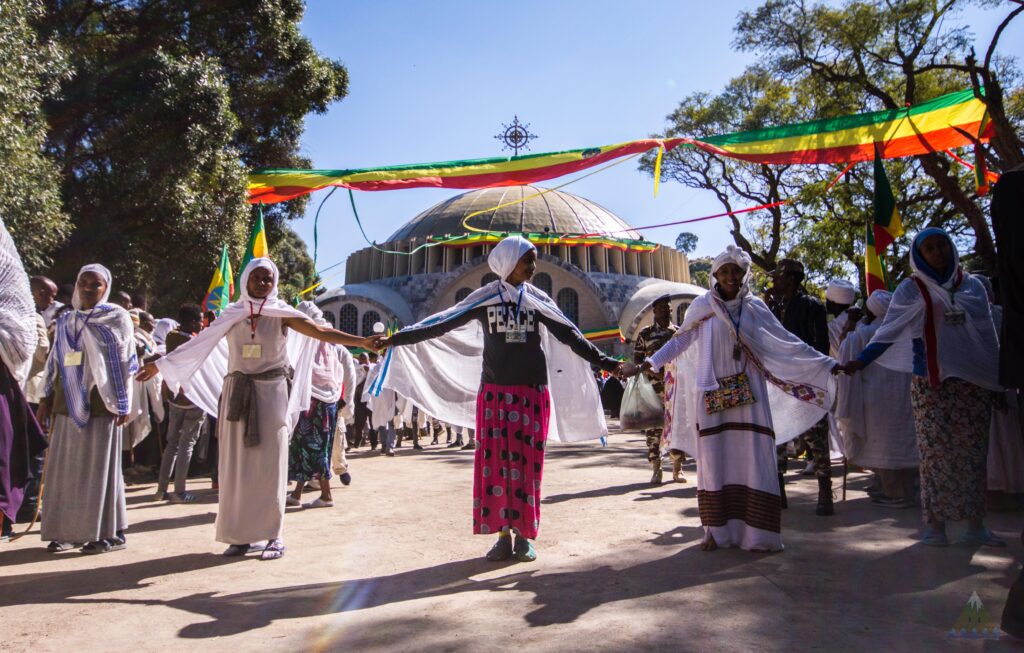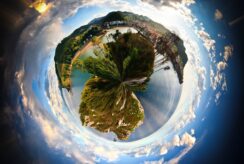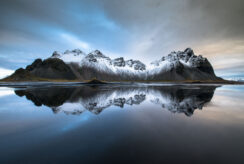Tigray – Northern Ethiopia
On a way back from diving contract in Madagascar, my flight stopped in Ethiopia. My knowledge of Ethiopian culture was just Lucy, the Rastafarian culture and a tribe life in the southern part of the country. Didn’t even know the highest point was more than 4000m altitude…
Checking quickly on National Geographic, I noticed a massive mountain range in the Northern part, and I thought it could be an interesting journey. It was end of November, a good season for to get up in the mountains, not much rain and comfortable temperatures.
After two days in Addis Ababa, visiting Lucy (she ages pretty good), organizing a bit the trip and getting lost in the crowded city, I landed in Tigray Region. As the northern region of Ethiopia, It borders directly Sudan and Erythrea.

Tigray and its people played an important role in Ethiopian history.
First on a pure historical role. Some examples like The battle of Adwa in the late 19th century, when Ethiopian army, supported by France and Russia defeated the Italian Kingdom on their will to expand in the Horn of Africa. Tigray played a massive role in the opposition against the Derg’s regime in the 70s.
The other singularity of this region is its religious situation.
Almost 95% of the population is Christian Orthodox, the other part being Muslin or other. An architectural singularity is that some churches are located on top of mountains or directly carved in the stone of a big wall …
I thought “Hmmm … If you want to pray, you have to hike … Interesting …”
This idea took a more general sense, when my Ethiopian friend Goytom explained me the reason of so many white dressed people walking on the side of the roads. “They are on their hike too”.
They are Christian Orthodox pilgrims, gathering in Aksum city, for the Festival of Tsion Mariam on the November 30th. And a big part of them come from all around Tigray and behond, walking the path. Aksum is where is supposed to rest the Ark of the Covenant, inside the Church of Our Lady Mary of Zion, where the gathering has to happen.
On their way, pilgrims make detours to pray in the holiest and most famous churches. I was impressed by the physical global effort of hundreds of kilometers, in primary condition, improvising shelters, meals. The youngest would be babies carried by their mother, enjoying the view in between a nap and a breastfeed. The oldest I saw, would be in their 70s, smashed by the time and by hard farmer life, handling the pilgrimage with a wise look, a peaceful smile and a proud attitude.
I was following the same path, I had the chance to understand a pilgrimage …

The most famous churches are located in Gheralta mountains where more than a hundred of them are carved in sandstone, the oldest being for the 5th century …
Most of the time, this place see a bit of tourists, but is never crowded, as the churches are quite remote. This time of the year, pilgrims pass by and I made the majestic sceneries more dynamic and alive.
Abuna Yemata was the first one. Located 2,580 metres high, it was carved in sandstone and the entry is 1m near a 300m drop.
The path to arrive there is already an adventure.
Your first pass by the bells, two massives thin stones hanging close to each other, and you cling another stone in the middle of both. The sound is projected by the massive wall straight to the immense plateau.
Once you let your shoes down the wall, you have to climb the side of this impressive crest, using big holes carved on the walls, pulling trees. A harness is used for the some people, with local helping and spreading good mood. Laughs, cries, loud breath, tears, mockery, … and selfies.
I couldn’t believe my eyes. This beauty, this exposure, this cliff and this priest! He looks 80 years old, and still climbs up here everyday.

I took some more days to trek in the region and to get on top the highest plateau with my friend Kidane, who was born in Gheralta and knows the region and accesses to highest points. We had a pretty epic hike day, long warm and pretty full of adventures. From up there we could see the location of more than 20 churches hidden in the rocks, Abuna Yemata entrance is definitely the most impressive one.

Back on the road, heading to Debra Damo, overtaking hundreds of walkers. Being early morning or late at night, there was always people on the road, time is incompressible and the holly festival is soon …
Debra Damo is a church on a big plateau, and the way up is a rope to climb a wall. Literally, 15m pulling with the arms, barefoot against the wall, the rope being use at the same time to get up and down.
Same as before, usually not any people there. But when I arrived to the rope part, it was all crowded with barefoot young guys, all wearing jeans and waiting in a pack for their turn. They were forming a human crash-pad, the next person to climb being the most exposed to falls of precedent climbers, or too fast descent of another pilgrim.
As the access is strictly reserved to males, ladies sit a bit further and comment each climb, each deselect, with fear, laughter, and I think a bit of envy …
The ambient is warm, the position has to be defended.
On the wall, some get stuck, being helped or laughed at, having then to usethe old-chool-rope-made-hyper-loose-harness. Others have to cross people descending, stepping on their face, pulling their jeans, just improvising I guess …
Some locals make a business taking photos of climbers and then developing the picture on a small portable printer back down. They like the moment, they are proud of the whole scene.

I finally arrived in Aksum on the 29th of November, where everything was fully booked. Some travelers passing by, a few, and almost one million of Ethiopian pilgrims passing by within two days.
Everybody is there, from babies to elders, poor to rich, some coming with mattress and beds, other with just their white holly scarf. They all gather in the outside of Church of Our Lady Mary of Zion, preparing their camp for this long night to pray, straight on the ground. At noon, the inside of the church is already full, holes in between camps outside get filled, and the crowd is still coming.
I went for a coffee, in a improvised salon on the side of the road and stayed there two hours just watching the flow, and their faces.
The sound of the relief, of the joy, these old women finally arrived, contemplating the church yelling ‘lilililiiiiii’, full smile.
I find them beautiful, everybody in his own way.
Some girls got a perfect haircut, the traditional braid-mohawk, nails done, dress, jewelry, some men show up in tuxedo.
Some stops by the poorest to share some goods, some take time to visit the city, some are already praying.

At 2pm, the Orthodox Pope arrived for a celebration and a blessing. Army men came to make room as the crowd all gather to see the Pope, thank him, love him and listen to him.
As he went inside the church to start the ceremonial, some people made a human-round, all around the church to mark a limit for pilgrims. Inside was just for the elite.
I watched this human circle being formed and in front of me was this girl with a dark shirt with a white writing on it : PEACE.
Was a pretty cool moment, and a good end of the journey.



